YOUR CART
- No products in the cart.
Subtotal:
$0.00

The Tokyo National Museum recently opened a new exhibition space that improves access to important artworks related to the history of Buddhism in Japan. Situated on the mezzanine of the museum’s Gallery of Horyuji Treasures, the newly renovated area provides high-quality reproductions of works now too fragile for regular display. It also features an interactive digital viewer on a high-resolution 8K monitor, allowing visitors to magnify images of the works down to the smallest detail, and with greater clarity than would be possible when viewing the originals.
For its first exhibition, through July 30, 2023, the new gallery presents life-size reproductions of an 11th-century painting that once adorned sliding doors inside Horyuji Temple in Nara. Across ten panels, Illustrated Biography of Prince Shotoku narrates the life of the temple’s founder. The son of an emperor, Prince Shotoku (574–622) greatly encouraged the spread of Buddhism in Japan, founding Horyuji in 607 as well as other centers of Buddhist learning and worship. In 1878, Horyuji presented the Imperial Family with more than 300 Buddhist antiquities, now housed in a strikingly modern building within the Tokyo National Museum’s campus.
The focus in the new space will change midsummer to a series of Buddhist murals that once decorated the inner walls of Horyuji’s Kondo Hall. Believed to have been painted between the latter half of the 7th century and the early 8th century, the murals—long admired as especially fine examples of early Buddhist art in Asia—were severely damaged in a fire in 1949. But thanks to a detailed photographic survey that had been made several years earlier, there was a record of what the murals looked like before the damage. In 2020, the original glass photographic plates were successfully restored and digitalized. These images are available now in an online interactive gallery, but the exhibition, running from August 1, 2023 to January 28, 2024, will provide the opportunity to view the images on large-scale panels and zoom in on details using the interactive console. Thereafter, the two works will alternate with six-month rotations.
Videos with English subtitles, recently released by the museum, provide a fascinating look at Horyuji Temple and the two featured works, National Treasure: The Illustrated Biography of Prince Shotoku and The Murals at the Kondo Hall of Horyuji Temple. Take a look at some of the gallery’s offerings below.
***
New exhibition space at the Tokyo National Museum’s Gallery of Horyuji Treasures offers high-quality reproductions of works too fragile for regular display, presented as life-size photographic panels unobstructed by barriers or glass. A digital viewer allows visitors to zoom in on details.
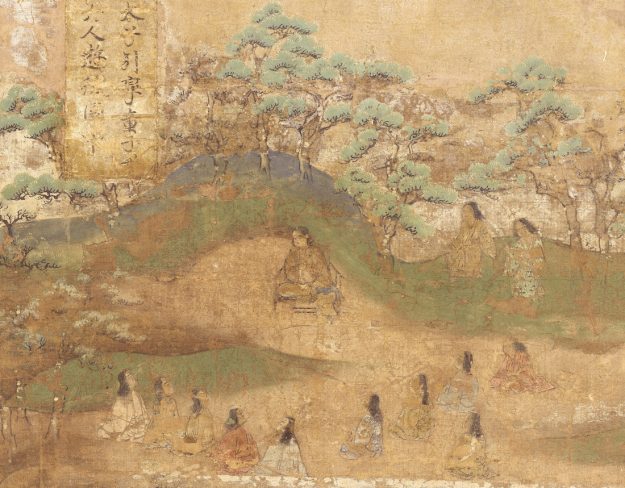
The Illustrated Biography of Prince Shotoku was painted in 1069, some 450 years after Prince Shotoku’s death. Revered even in his lifetime, over successive generations, various legends arose endowing him with superhuman abilities. This scene presents Prince Shotoku (center) as a child prodigy, able to hear the words of thirty-six playmates at once and repeat everything back perfectly.
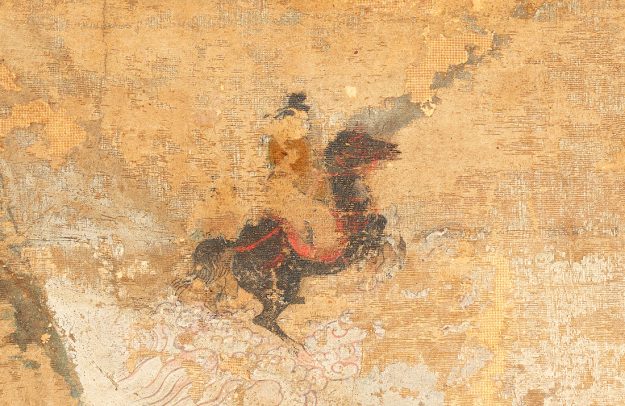
In addition to the power to levitate himself off the ground, Prince Shotoku was also said to possess extraordinary skills in archery and horsemanship. Among the fifty-eight episodes chosen by the artist to relate the prince’s life is this scene of him literally flying a black stallion up Mount Fuji.
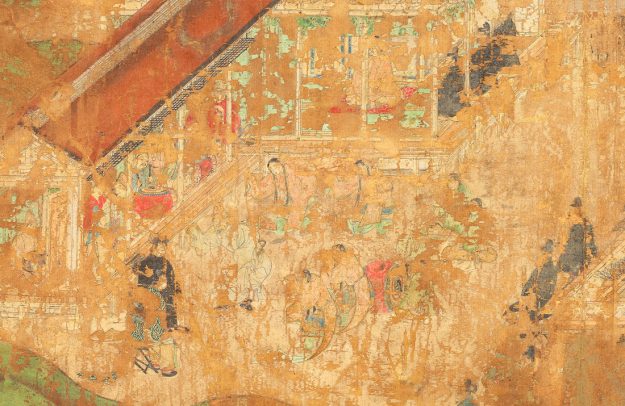
Although the colors have faded and the pigment has flaked away from the silk backing in places, fascinating details can be seen in this scene of an instructor in Korean dress teaching Gigaku dance to Japanese pupils. A Buddhist performing art, Gigaku was introduced to Japan from the Asian continent in the early 7th century. There are musicians with drums under the roof on the left. The figure seated on a red cushion under the pavilion (top center) is Prince Shotoku.
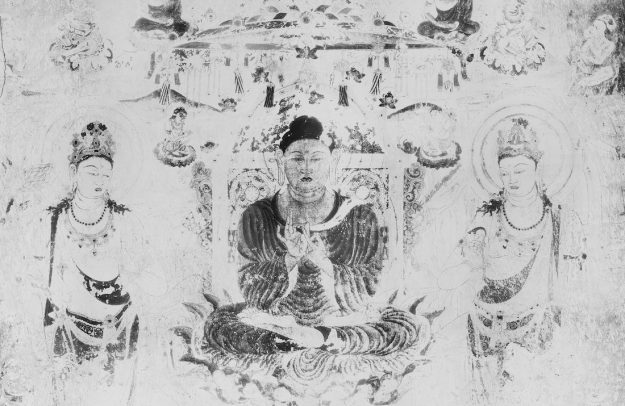
An example of a digital image made from restored glass photographic plates that date back to 1935, before the famous murals in the Kondo Hall of Horyuji Temple were damaged by fire. This is a detail of Mural No. 6, once positioned on the western wall of the Kondo Hall. In elegant lines of amazing uniformity and expressiveness, the scene represents the Pure Land of Amida and is considered a masterpiece within a masterpiece.
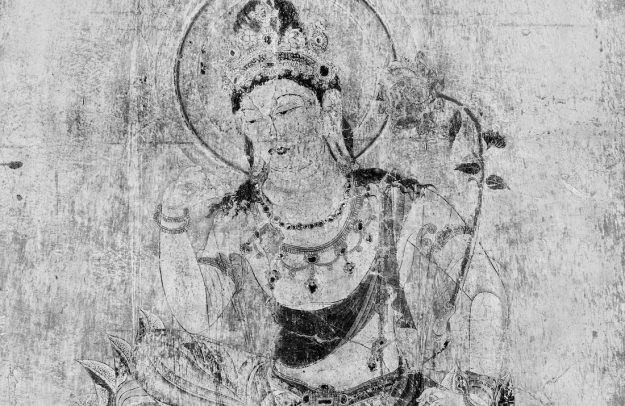
Detail from Mural No. 2 in the Kondo Hall of Horyuji Temple, depicting a bodhisattva. In recognition of their value as precise records of the Kondo murals prior to their damage in the fire, and as works of art in their own right, the photographic plates were designated Important Cultural Properties of Japan in 2015.